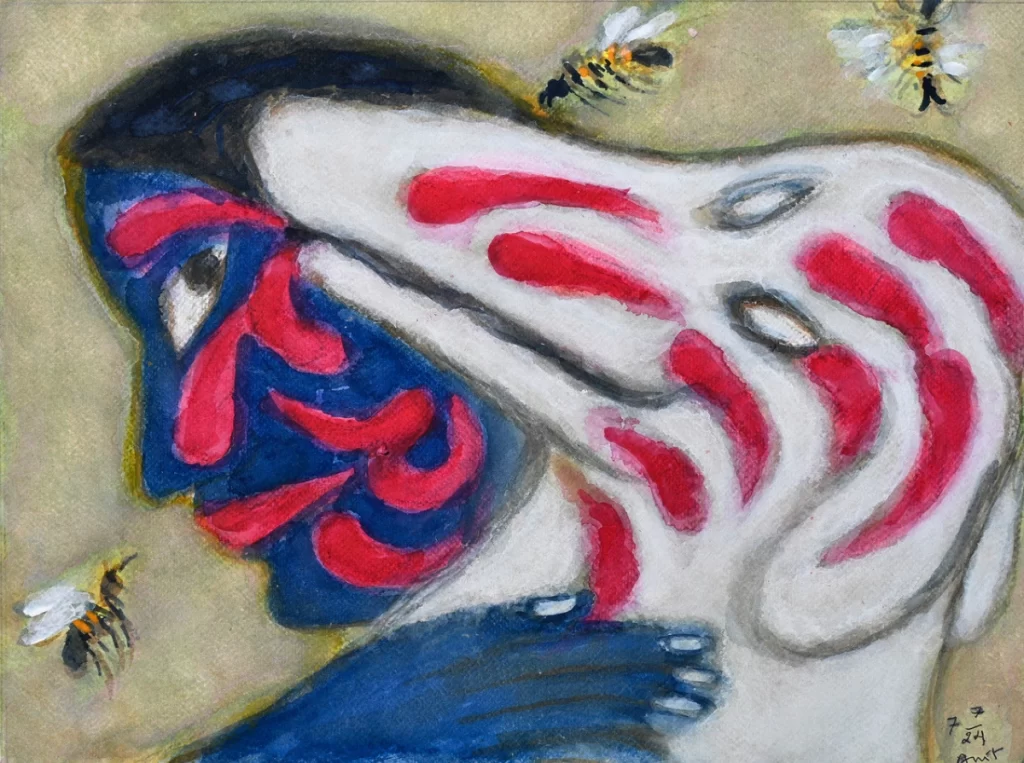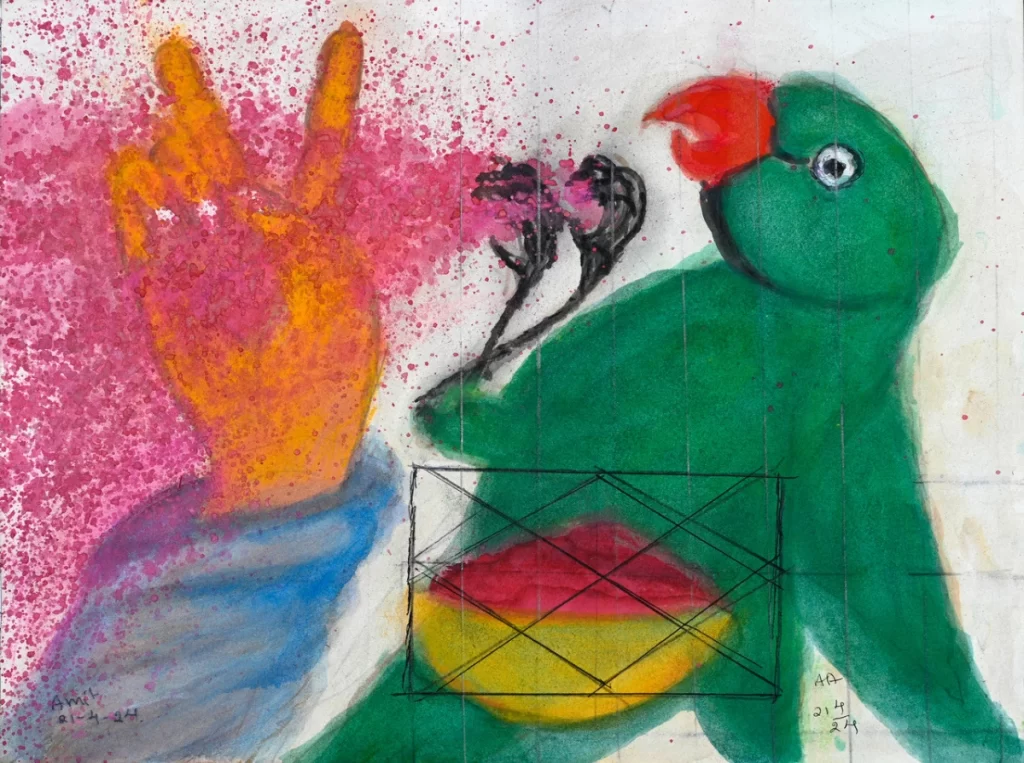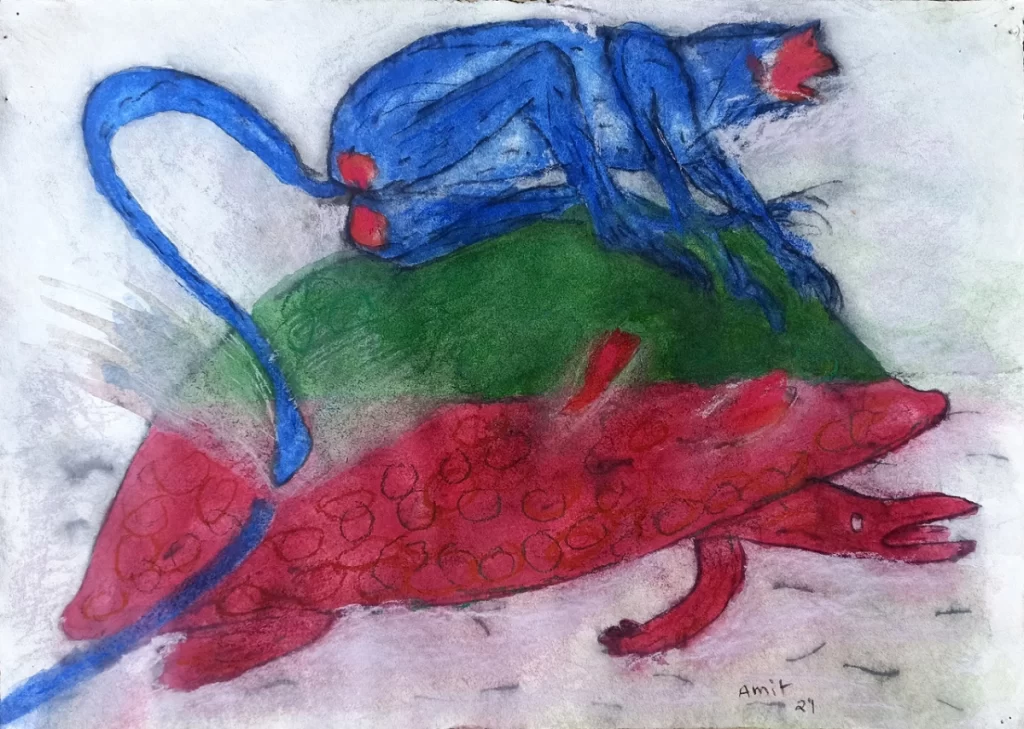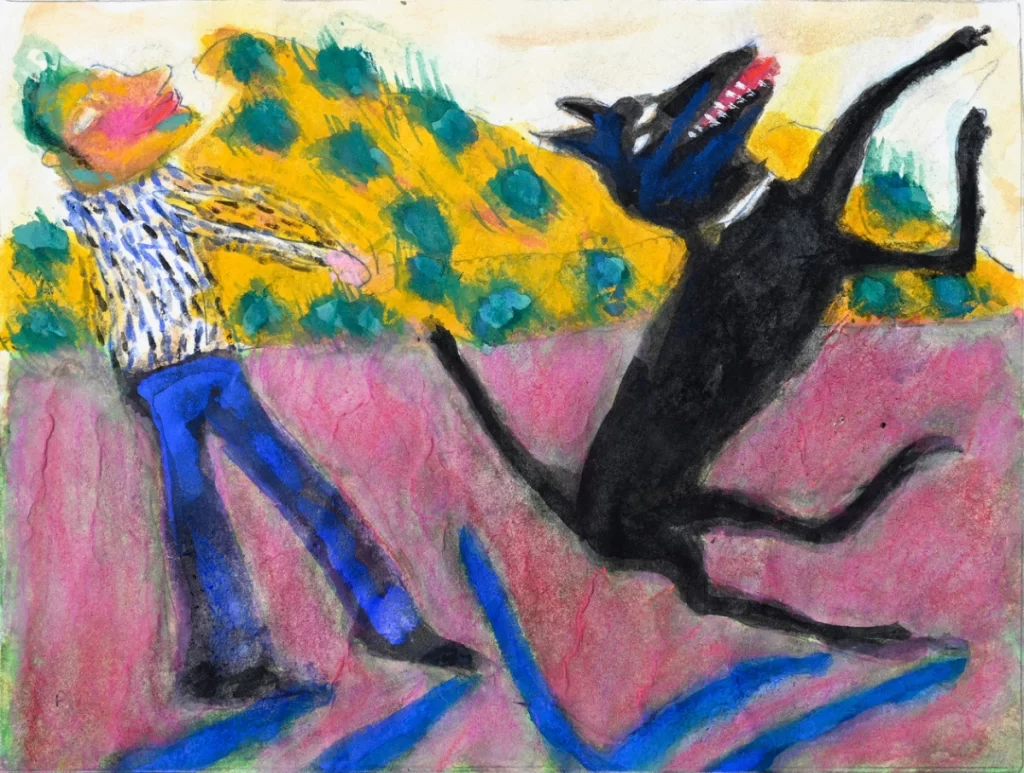Amit Ambalal At Gallery Espace
Gallery Espace as part of its 35th anniversary is presenting a solo exhibition of recent works by Amit Ambalal. Titled, ‘In The Garden of Sumeru,’ it takes us into his playful yet colourfully layered world populated by animals, birds, and elements of nature. The exhibition will begin on 23 January 2025 and be on view till 1 March 2025.
Ambalal’s vision traverses the borders between the real and the imagined, the whimsical and the profound, where the ordinary becomes extraordinary through his distinctive lens of wit, humour, and irony.
What is In The Garden of Sumeru About?
The crucial protagonists in In The Garden of Sumeru are the animals – Dusky, Amit Ambalal’s late dog lovingly licking the bust of his father and Snow, his pet now who leaves pink “pathways of love” in Chronology of Love. These tender moments reflect Ambalal’s deep connection to his surroundings and the lives and emotions these sentient creatures embody.

Watercolour on paper, 16×12.5 in.
Courtesy – Gallery Espace
The monkeys that caper across Amit Ambalal’s canvases with playful abandon — rendered from his keen observation of the simians that throng the grounds around his home and studio— embody endearing, almost human-like qualities. In a striking painting, a monkey rides atop a tortoise, the agility of one contrasted with the slow, measured pace of the other. These fascinating scenes are counterbalanced with a sharp wit, as visible in Tantric Tota, where a parrot predicts election results – a telling reference to contemporary politics.
While humour and wit are the trademarks of Ambalal’s practice, his paintings often comment on social and human conditions. In Who is the Boss, the dynamics between the master and his massive Great Dane are reversed, as the dog dictates the direction of their stroll with undeniable authority.
The tiger is another recurring motif in his works, symbolising, not just bodily prowess, but also a projection of human desires and aspirations. Similarly, elephants are rendered with grace and majesty, their girth highlighted through shades of blue and diffused contrasts.

Watercolour on paper, 16×12.5 in.
Courtesy – Gallery Espace
For Amit Ambalal, animals are more than mere subjects — they are characters, companions, and metaphors. Their actions and expressions carry an innocence and energy that breathe life into his works. Through them, he crafts funny narratives which are perceptive, forgiving and profound, reminding us of the interconnectedness of all beings. The artist reflects, “The human beings are present within the animals, within the emotions and expressions they display.”
Amit Ambalal’s preferred medium – water colour and pastels – allows for a convenient intimacy—“chit chat” as he calls it, so that each painting unfolds spontaneously. Yet, under spontaneity lies a deliberate mastery of shape, colour, and composition that transforms the canvas into an area of discovery and reflection.

14.5×20.5 in.
Courtesy – Gallery Espace
His works are deeply rooted in his observations of Nathdwara Pichwai paintings, of which he has an extensive collection, inspiring his approach to composition, perspective, and shade. As with Pichwais, his works frequently subvert naturalistic presentation — figures appear in two dimensions, defy perspective, and scale is subverted to intensify the visual and narrative impact.
About Amit Ambalal
Born in 1943, Amit Ambalal was home-tutored in art by the veteran artist Chhaganlal Jadav. His early years were spent managing the family textile business and it was only at the age of 36 that he decided to give it up and turn to art full-time. A prolific artist, Ambalal has participated in solo and group exhibitions at galleries across India and abroad. Ambalal is the author of “Krishna as Shrinathji”, a seminal book on the Pichwai paintings of Nathdwara.

Watercolour on paper, 16×12.5 in.
Courtesy – Gallery Espace
About Gallery Espace
Established in 1989 by Renu Modi, Gallery Espace is among the foremost arts spaces in New Delhi, recognized within the country and internationally, for nurturing the contemporary moment in Indian art. Eclectic, nuanced and socially conscious, the gallery programme has consistently promoted young, original talent and cross-disciplinary curatorial practices.
Image – Choopi hain kahan (2024), Watercolour on paper, 16×12.5 in. Courtesy – Gallery Espace
Contributor





